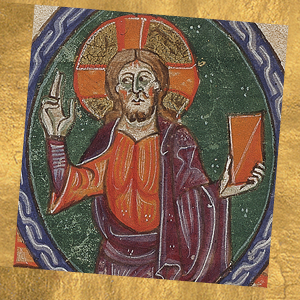Sts. Andrew Dũng Lạc, and his companions, Martyrs

The seed of the Church
One man, a priest, gives his name to today’s feast, but the one stands for many: 117 Vietnamese faithful. They were bishops, priests, and many laypeople, a mother of six and even a nine-year-old child, who gave their lives for Christ between the 17th and the 19th centuries. 96 were native Vietnamese and 21 were Spanish or French missionaries who had embraced that land and culture. The group of 117, canonized together by Pope John Paul II in 1988, in turn stands for a nameless multitude estimated at between 100,000 and 300,000 martyrs, the “great cloud of witnesses” whose blood was the seed of a thriving Church in the land of Vietnam.
An-Tran, or Andrew
Fr. Andrew Dung-Lac, who gives his name and his life’s story to this group of martyrs, was born with the name Dung An-Tran to a poor, ordinary family in northern Vietnam around the year 1795. The family followed the traditional religion of their land. But when An-Tran was twelve, his family moved to Hanoi to look for work. There the boy met a Christian, a catechist who housed him and taught him about the Lord and Savior of mankind. The boy was baptized with the name Andrew. In 1823, Andrew was ordained a priest, and his preaching and simplicity of life led many others to baptism. But it was a dangerous time to be a Christian in Vietnam.
In 1832, the Emperor Minh-Mang banned foreign missionaries and commanded Vietnamese Christians to trample on crucifixes in order publically to renounce their faith in Jesus Christ. Many would not. Love made the faithful creative, and they hid priests in caves or sometimes in their houses, risking and often giving their lives. Some of these faithful were beheaded; some were suffocated; some were flayed alive; and some, often priests, were hung in cages in public squares until they died.
Fr. Andrew was first arrested in 1835, but his parishioners ransomed him. He changed his last name to Lac and moved to a different region to avoid persecution, but persecution followed him. In 1839, he was arrested again along with another Vietnamese priest, Fr. Peter Thi, whom Fr. Andrew had visited in order to go to confession. The two were ransomed, then arrested again, tortured, and finally beheaded in Hanoi on December 21, 1839.
Deep roots
Other waves of persecution followed Fr. Andrew’s death, just as they had preceded it. Indeed, the Vietnamese faithful were subjected to some of the cruelest forms of martyrdom in the history of Christianity. Christians had the words “ta dao,” or “false religion,” written across their faces. They were stripped of their belongings and families, and subjected to diabolically inventive forms of torture. Christian villages were destroyed. But the baptized members of the Body of Christ in the land of Vietnam knew the voice of their Shepherd too well to betray Him. What the rulers of the land did to wipe out the Church, the Spirit of God used to give the Church deep and lasting roots among the Vietnamese people. By the end of the 20th century, Catholics were estimated at 10% of the Vietnamese population.
When Fr. Andrew Dung-Lac and the Vietnamese martyrs – the 117 named and the hundreds of thousands unnamed – were canonized in 1988, the communist government of Vietnam did not permit a single representative from that country to attend. But 8,000 Vietnamese Catholics from the diaspora were there, filled with joy to be the children of this suffering Church. The feast day of this great cloud of witnesses from the land of Vietnam is celebrated on November 24.








